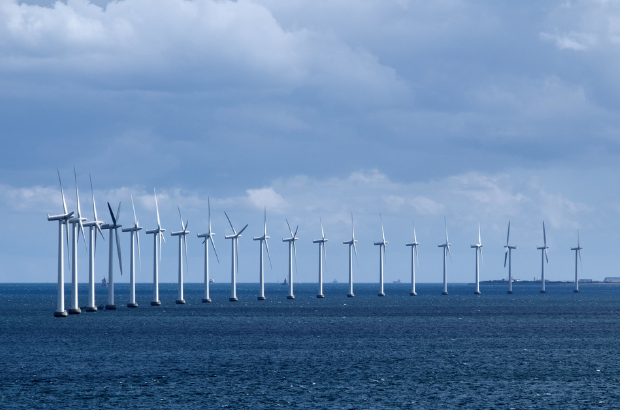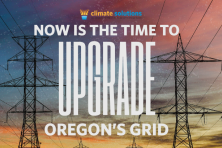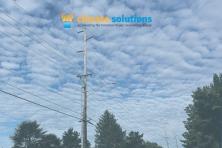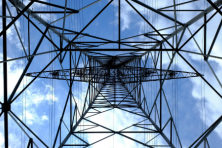Offshore Wind Could Help Oregon and Our Region Meet Clean Energy Targets - If We Do it Right.
The Oregon Coast is known for its dramatic cliffs, rock formations, and scenic views. But did you know the south coast of Oregon has another unique distinction? It has some of the strongest offshore winds in the country. There is a possibility of harnessing those winds by building floating wind turbines in the ocean (some of them as tall as the Empire State Building to maximize energy generation per turbine). Offshore wind from the Oregon Coast could provide up to 3 gigawatts of renewable electricity to the grid. That’s enough to power at least one million homes (we currently have 1.5 million households in Oregon)! While Climate Solutions believes offshore wind power is an exciting prospect on the horizon for Oregon, we want to make sure it’s developed in a way that values and respects Oregon’s communities and marine environment. If we are thoughtful about offshore wind, everyone in the state will benefit. Oregon will have a more reliable and cleaner electricity grid and significant economic development on the coast.
The Opportunity and the Challenge:
Our region is embarking on a clean energy transition. Oregon, Washington, and California have legislatively mandated benchmarks for decarbonizing their electricity. For its part, Oregon passed the ‘100% Clean for All’ law two years ago. Portland General Electric (PGE), PacifiCorp, and independent power providers are now required to meet key clean energy targets - leading up to 100% clean energy by 2040. We urgently need new clean energy resources like solar and wind, and storage technologies like batteries to achieve these targets.
Offshore wind could not only help replace fossil fuels to power our homes and businesses, but also help meet the region’s growing demand for electricity from large industrial loads like data centers and manufacturing, along with a growing number of electric vehicles and appliances. Offshore wind is a particularly useful resource because it is stronger and more consistent throughout the year than wind and solar facilities on land, so it can provide energy for most of the day. An injection of power from offshore wind could also offset the amount of land needed for onshore renewable resources. That is helpful as folks in Oregon grapple with protecting land while developing renewables. Building renewable energy projects in Oregon could reap economic benefits as well, including port development, manufacturing of component parts, and job growth.
These are all reasons to be optimistic about the potential and opportunity for offshore wind in Oregon. However, before steel is in the proverbial ground (actually floating on platforms at sea), we need to consider and navigate possible impacts on Tribal governments and Indigenous peoples, communities of color, the fishing industry, local coastal communities, workers, and marine wildlife. It is also critical that communities in Oregon historically marginalized from energy decisions have a voice in the decision-making and benefit economically from offshore wind development, particularly those communities that have borne the brunt of fossil fuel infrastructure.
An Overview of the Process
In 2022, the Bureau of Ocean Energy Management (BOEM), the federal agency tasked with permitting and managing offshore energy resources, began assessing offshore wind potential in Oregon. Building ‘fixed bottom’ wind turbines is impossible due to the steep slope of the ocean floor. Therefore, BOEM decided to explore floating wind turbines focused on the southern Oregon coast, where the wind resource is strongest. Although it is a newer technology, floating offshore wind is operational in several countries, including Scotland and Norway.
BOEM recently asked the public to comment on draft Wind Energy Areas near Coos Bay and Brookings, which are areas of the ocean that might be suitable for offshore wind. We are in the early stages of a process that includes area assessment, leasing, environmental review, permitting, and finally construction of offshore wind projects in Oregon. Identification of Wind Energy Areas is part of a longer process shown in this timeline:
Climate Solutions has this guiding principle: there is an identified need for offshore wind in Oregon to achieve our 100% clean energy goals, and it must happen through a robust, transparent, inclusive, and equitable process.
As we have engaged in the process and filed formal comments to BOEM so far, we’ve conveyed this principle to the federal government and state agencies involved. Below are a few specific issues we’ve raised and want to ensure BOEM recognizes as it assesses prospective offshore wind projects:
- Engage in government-to-government consultation with Tribes as sovereign nations with a historical connection to traditional fishing practices and cultural resources on the coast.
- Provide a sufficient number of data sets and studies to understand potential environmental impacts.
- Ensure offshore wind projects provide good-paying jobs and local economic benefits.
- Ensure offshore wind projects benefit marginalized communities.
Climate Solutions is working with many partners and stakeholders, the state, and BOEM to identify improvements in the process that will ensure impacts of offshore wind are avoided, minimized, or mitigated and that all voices are heard. There is a long way to go in this process, including both state and federal assessments and studies. Oregonians will have many opportunities to comment, and several stakeholder processes are underway that will give communities a voice in the decision-making. We will keep you posted as this critical process for offshore wind moves forward!






